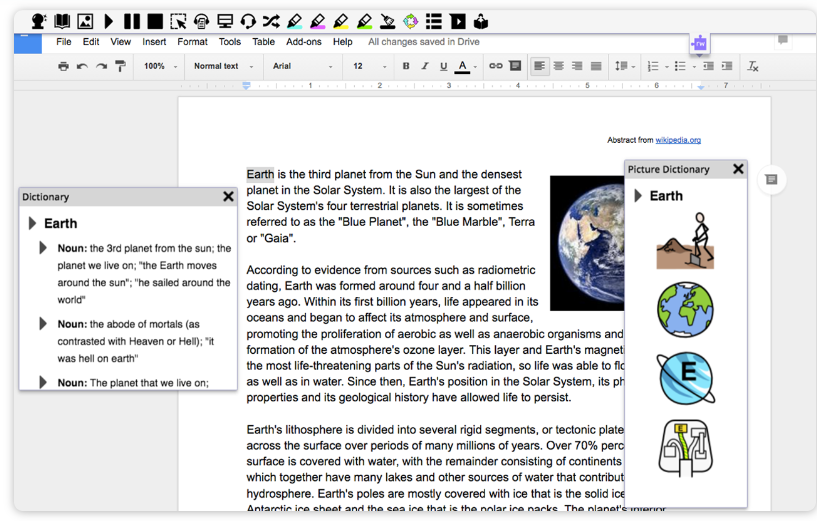What sounded really interesting to me in one of the articles that my classmate shared as a part of class assignment was this and It was so profound: The web influences peoples way of thinking, doing and being, and people influence the development and content of the web. The evolution of the web from Web 1.0 to Web 2.0 and now to Web 3.0 can be used as a metaphor of how education should also be evolving, as a movement from Education 1.0 towards that of Education 3.0. The Web, Internet, Social Media, and the evolving, emerging technologies have created a perfect storm or convergence of resources, tools, open and free information access. The result is not only a change in what individuals learn but how, wry, and where they learn. Taking this one step further, or from another angle, moving from Education 1.0 to Education 3.0 can be likened to moving from Pedagogy/Essentialism/Instructivism through A andragogy/ Constructivism towards Heutagogy/ Connectivism.
The Education 1.0 class feels something like this:

It’s slow, one-way, and about as exciting as watching paint dry. Welcome to Education 1.0 – where teachers talk, students listen, and the snooze button gets a workout….. the common instruction from Education 1.0 was something like, ““Alright, class, here’s your digital worksheet for today. It’s basically the same as the ones you’ve been doing, just on a screen this time. Enjoy! It’s like the regular stuff, but with some extra pixels thrown in.”

Stepping into a progressive Web 2.0 Classroom
It’s like switching from dial-up to high-speed broadband. It’s interactive, dynamic, and engaging. Picture classrooms buzzing with activity, students actively participating in discussions, and learning materials that respond to their input. It’s a whole new world of education where students aren’t just passive listeners, but active contributors to their own learning journey. Welcome to the future of education!

Sneak in “Good morning, class! Today, we’re into the final phase of our course and will begin with assignment. So you’ll be tackling it right here on your screens together in groups. You will find it on your screens, write down what you understand and I will keep arranging it here on the Board to make it a perfect Jamboard. Comment, share ideas, and engage with your classmates in real time. So, let’s get started and make the most of this dynamic learning experience!” Education 2.0 – it’s the modern way we learn, and it’s wonderous. Instead of boring lectures, we’re diving into hands-on, interactive learning. It’s all about teamwork, solving real-world problems, and making learning fun. So, let’s embrace the future of education and make it an adventure!
The unimaginable for the most- Web 3.0

And now Education 3.0 – the ultimate upgrade in how we learn. It’s all about self-determined, interest-based learning where problem-solving, innovation, and creativity take center stage.
Web 3.0 is often referred to as the “Semantic Web,” a term coined by World Wide Web inventor Tim Berners-Lee. This new generation of the web is characterized by more meaning, context, and personalization. Unlike today’s Web, which is mostly focused on providing information, Web 3.0 is designed to provide users with a more personalized and interactive user experience. (LinkedIn)
In Education 3.0, learners aren’t just passive recipients of knowledge – they’re the creators of it. Picture a world where students actively shape their learning experiences, collaborating through social networks. It’s about blurring the lines between students, teachers, and the learning process itself.
Here’s the deal: Education 3.0 revolves around the three Cs – connectors, creators, and constructivists. These aren’t just buzzwords – they define the essence of becoming a self-determined learner. It’s about students taking charge, with educators as guides on the side.
To me, Education 3.0 is a dynamic blend of heutagogical, connectivist teaching. It’s about harnessing the power of networks, resources, and personalized learning journeys. Because every learner’s path is unique and driven by their passions. So, Education 3.0 leads to more ownership, validation from the learner and is a path for personalized, self-determined learning experiences!
This paradigm shift also calls for a paradigm change for the teachers. A feeling of being an empathetic, kind, intelligent teacher who not only facilitates learning but also is a student always and keeps learning while teaching.
Over all Web 3.0 brings some great transformation to teaching and learning however the AI and it’s reach is scary too. As education integrates with digital tech, privacy risks rise. Safeguards are vital to protect student data and ensure responsible use. The access to technology varies and may become a reason for the widening educational disparities. Social isolation may increase with excessive digital reliance, impacting not only the interpersonal skills. This may lead to a hoard of psychological issues and ensuing problem in classroom, family and society. Navigating these challenges is crucial for ethical and inclusive digital education.
https://www.linkedin.com/pulse/why-web-30-important-todays-evolving-world-how-changes-nextupgrad












